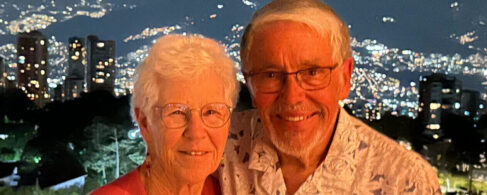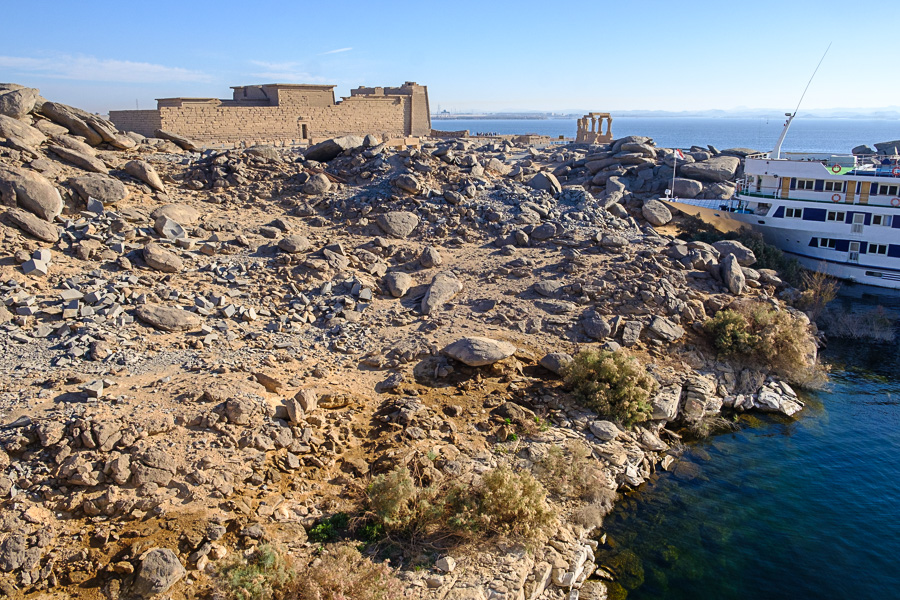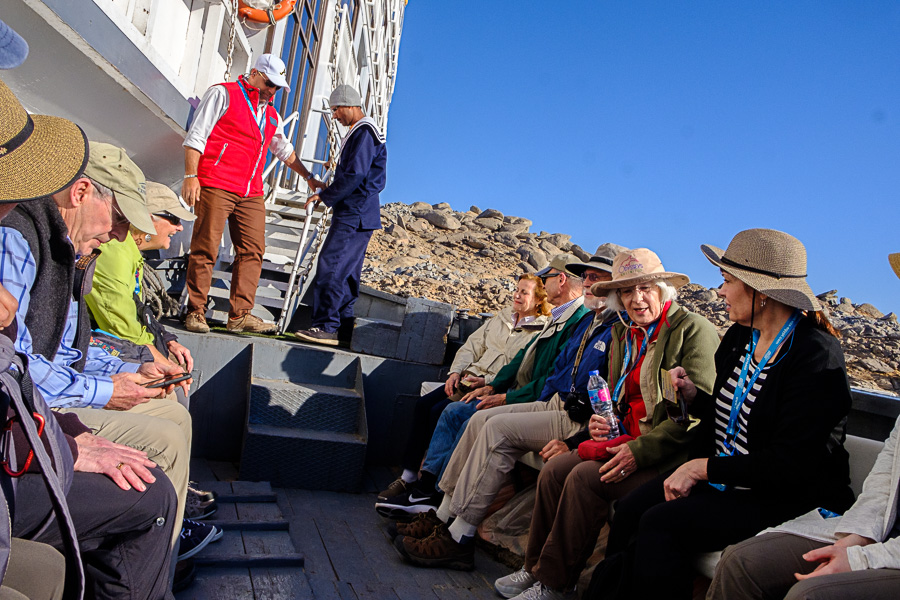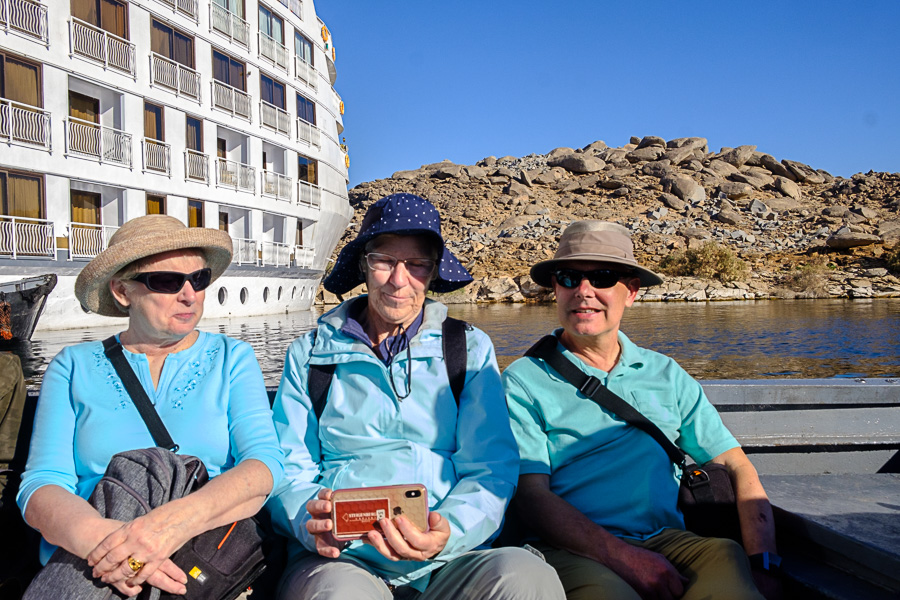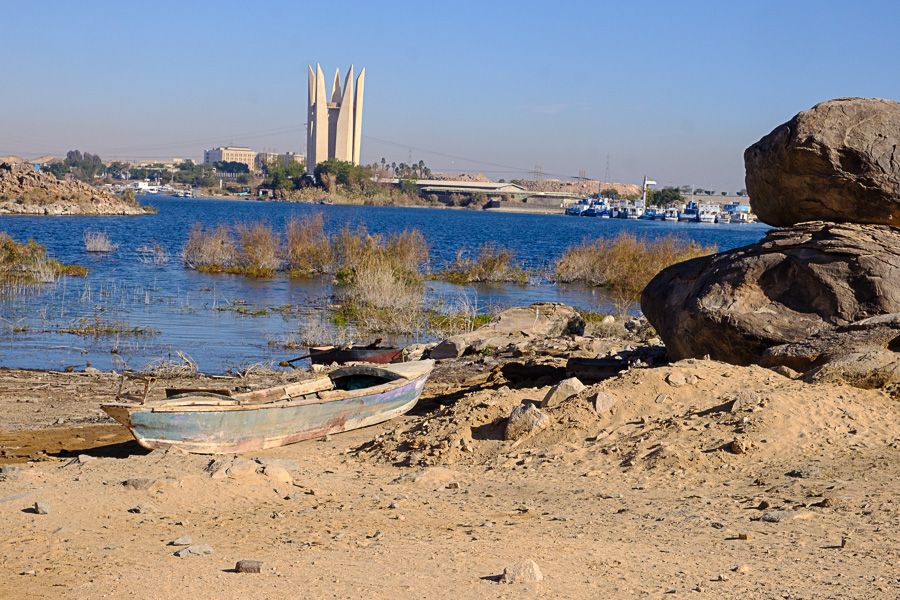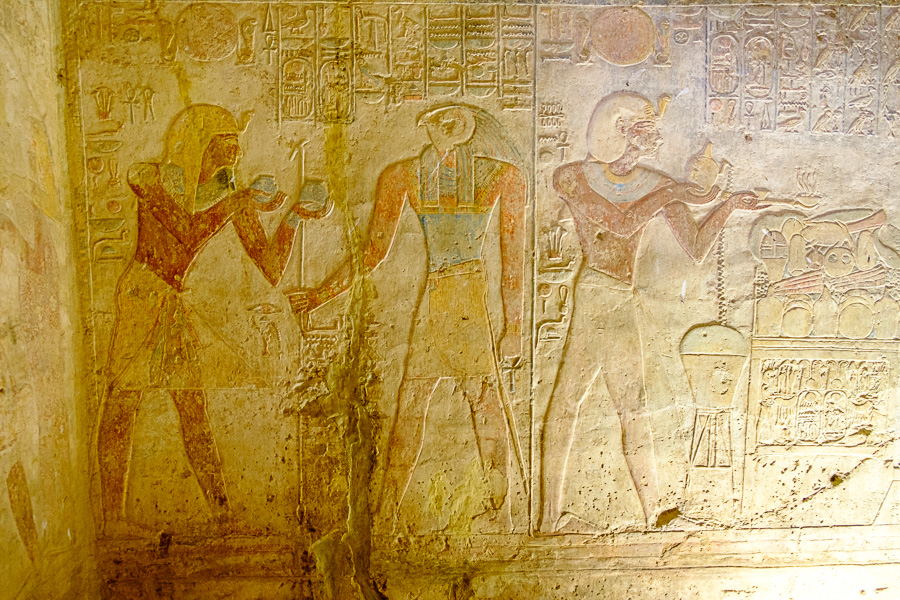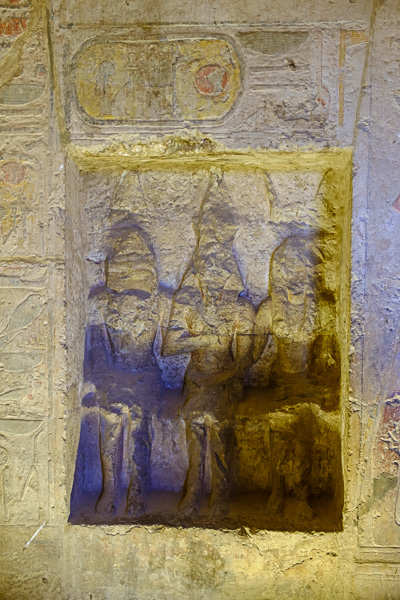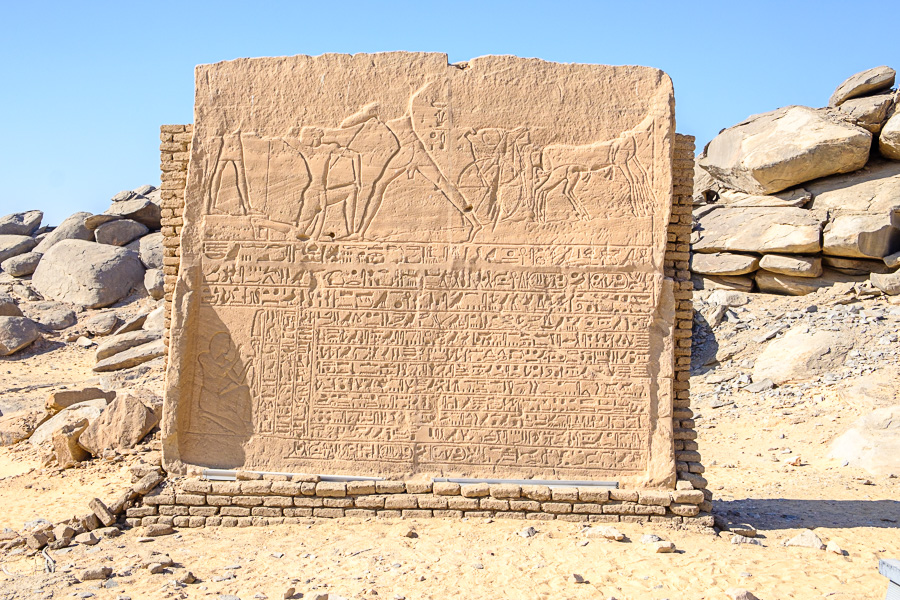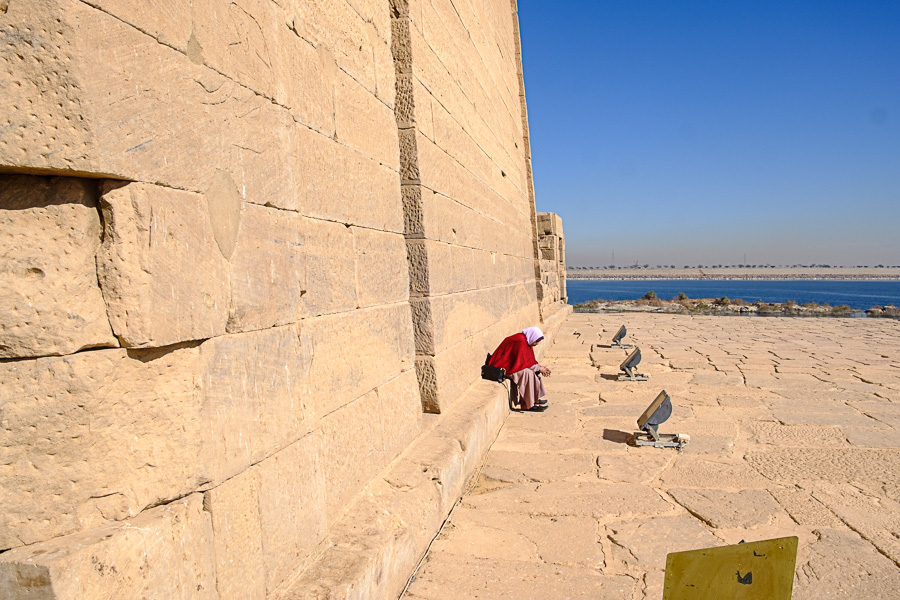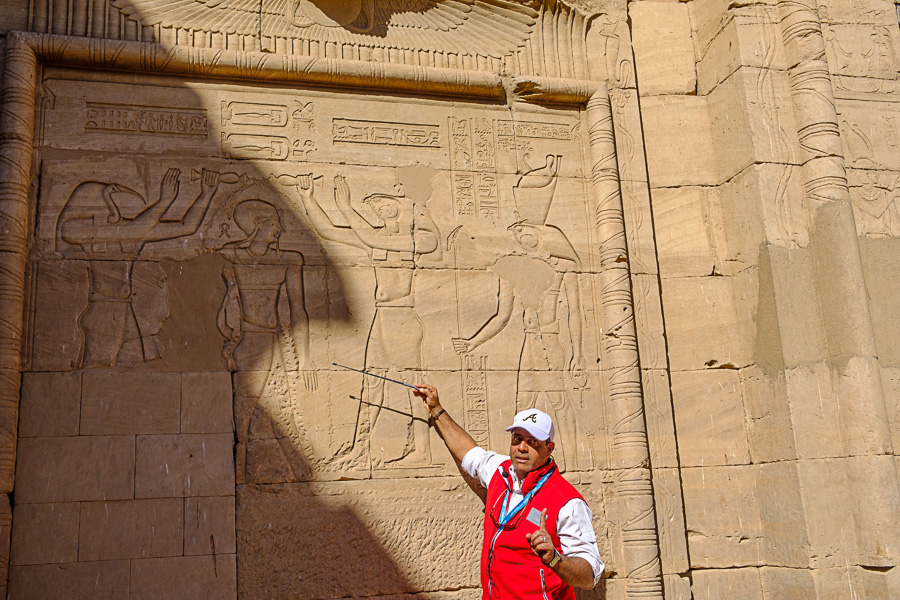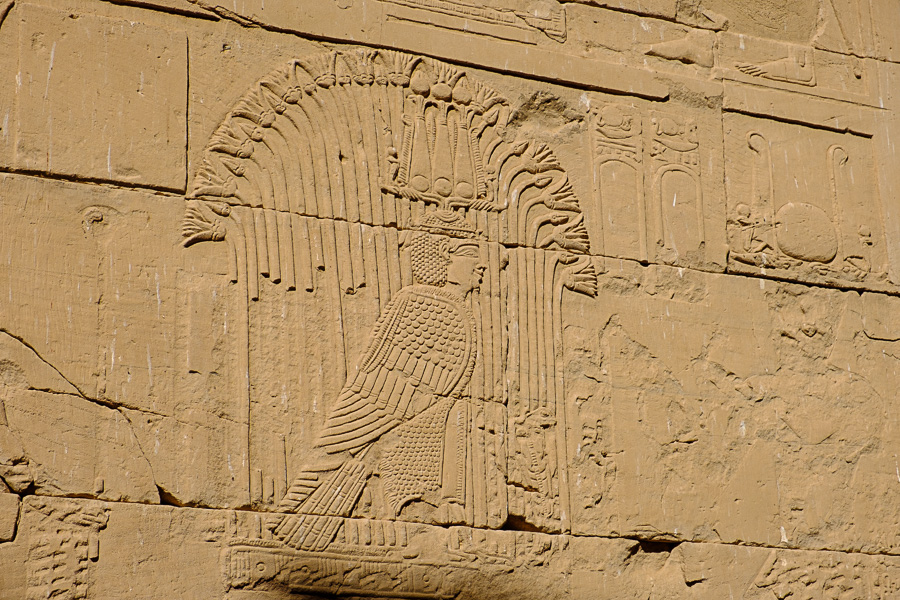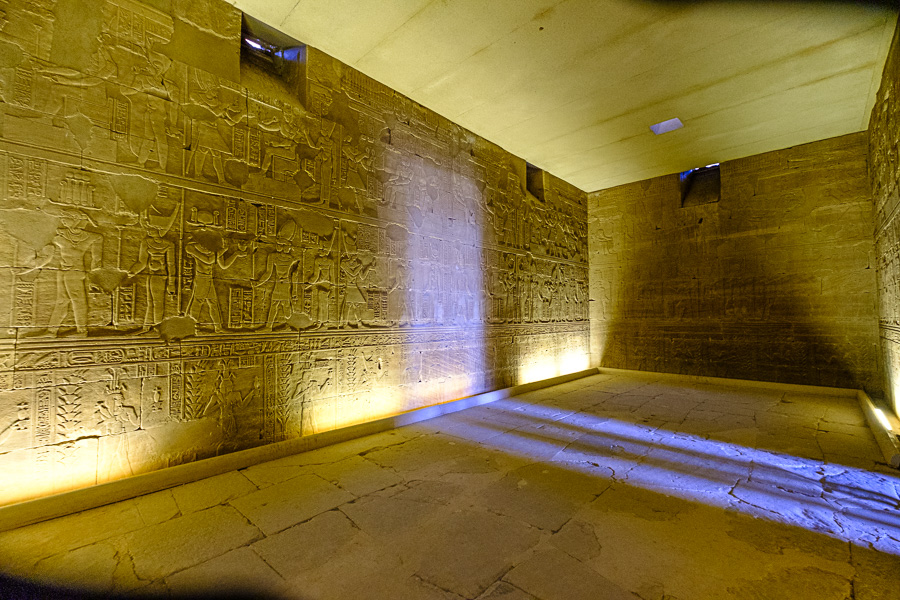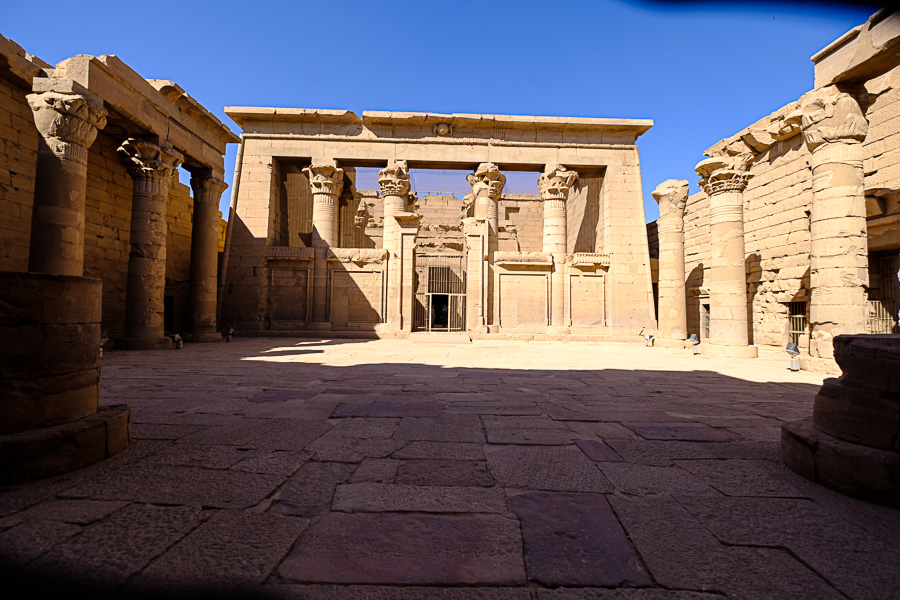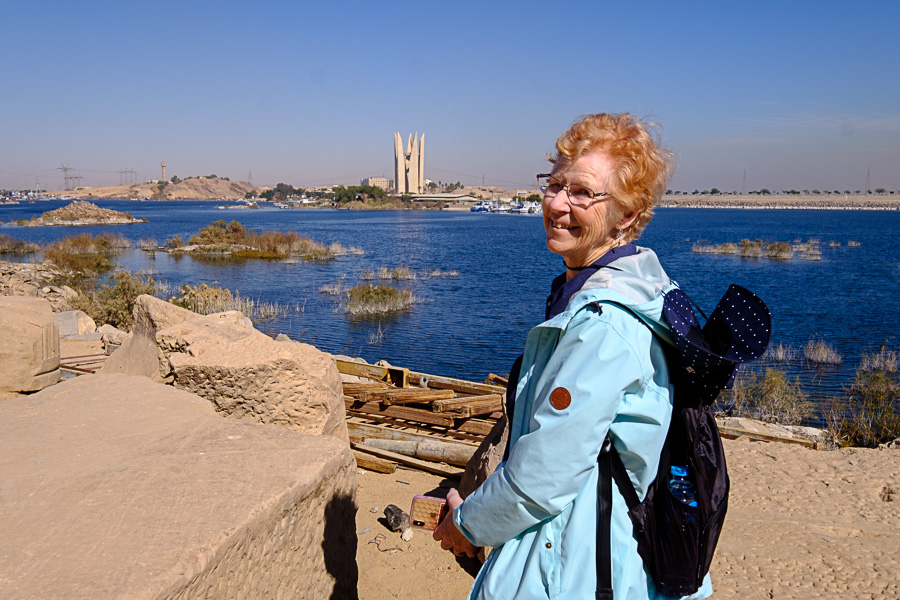We just returned from Kalabsha, a complex of three temples moved here in the 1960s to preserve them as the waters of Lake Nasser would soon engulf them. We’ve returned to the ship and will be sailing down Lake Nasser soon. That means we’ll lose wifi soon. You’ll be sorry to learn that that means I won’t have time to give a detailed historical discourse today. Suffice it to say, we saw a temple from the era of Pharaoh Ramses II, circa 1200 BCE and two others from the Hellenistic era, the time when Egypt was ruled by Greece, roughly 300 – 0 BCE. There were also stones on display from prehistoric times (prior to 3200 BCE) depicting animals, birds and plants from that era. All very interesting, but for now you’ll have to suffer through with just the pictures. But then again, be honest, you never read the words, just look at the pictures, right?
Here is the long version:
When the Aswan High Dam was built in the 1960s the Egyptian government undertook projects to relocate ancient Egyptian architectural features to high ground. Foreign governments led by UNESCO provided funding and technical expertise. This effort was successful: all identified temples and other ancient objects were relocated before the area was flooded. Of course, the potential remains that there are other temples not identified that have been lost.
The basic process was to cut the temple walls, columns, etc. into manageable chunks, transport the chunks to the new site and reassemble them on a site prepared beforehand. Cracks between chunks were covered over with mortar. Care was taken to preserve the images carved into the rock walls.
The island we visited today houses three temples, which is the usual practice: two or three temples per reconstruction site. If nothing else this makes it efficient for tourists: three temples in one trip.
We visited first Temple d’Amon, constructed during the reign of Pharaoh Ramses II around 1200 BCE. Ramses II was a prolific builder during his 60-odd year reign. This temple, like most of his work, is dedicated to a single idea: Ramses II is a great and powerful pharaoh, blessed by the gods, able to slay all foes and will be blessed by eternal life after death. The carved artwork we saw this morning was disturbingly similar to the political ads we see on TV.
Hatem, our guide, explained in some detail the meaning of the artwork. Surprisingly, to me at least, some of the wall carvings are painted and quite detailed. The painted carvings are inside an enclosed chamber. Paint that lasts 3200 years is better than what Sherwin Williams and the rest claim. The inner chambers were built into a cave, so the reconstruction had to be set in a similar man-made cave. The carvings in the outer, open courtyard have lost their paint but are still quite legible. As far as I could see there are few hieroglyphics, but the images carry very specific meaning that tell the story well without words.
The temple d’Amon was moved by Americans. They used diamond-bladed saws such that the cracks in the stonework are virtually unnoticeable. In other reconstructions we’ve seen the work is much less meticulous and the cut lines are clearly visible.
Next, the Kiosk of Quertassi, dating from the Greek era, perhaps 200 BCE. This small structure, again set into a hillside with decorative columns out front, was described to us by Hatem as being a birthing chamber. Whether or not anyone actually gave birth in this structure is not clear (to me). The significance is that the pharaoh is indeed given life – birthed – by the gods and goddesses.
Finally, Temple d’ Mandoulis, the largest temple on the island and a German reconstruction. Like Quertassai, it is from the Grecian period. The name of the pharaoh is unknown. The inscriptions again explain how this king is favored by the gods and goddesses, his prowess over his enemies is absolute and that he is assured of eternal life after death.
Several large stone carvings are on display on the temple grounds. These are the prehistoric carving of animals, birds and plants that were co-inhabitants of the Nubian region. Some of these animals, such as the elephant and ant eater, are no longer native having moved with changes in climate over the 5,000 plus years since they were carved.
We returned to our ship via boat, a long canoe-like vessel that held all 22 of us with room to spare.
This afternoon Hatem gave a lecture about Nubia and Nubian culture, which parallels and intersects with Egypt and Egyptian culture. Nubia is a region that extends from roughly the New Aswan Dam south into the Sixth Cataract in Sudan. It, like Egypt, can be subdivided into Upper Nubia (the southern part) and Lower Nubia (the northern part). At various times in history the Lower/southern part was referred to as Kush. It’s all very confusing.
Nubia is not a nation but rather a culture with its own spoken, but not written, language. Construction of first the old Lower Dam and the Aswan High Dam flooded the villages and fields of the Nubian people; the Nubians were “relocated” to new homes some distance from the Nile and Lake Nasser.
The Nubian people have their own distinct language, unrelated to Arabic. Because the Nubian language is oral, not written, the entire Nubian culture is endangered. Efforts are underway to create a way to transcribe oral history stories into a written format and to educate young people in the Nubian language and culture. But as is the case in many other parts of the world the success in preserving the Nubian way of life is uncertain.
Lake Nasser extends beyond the Egyptian-Sudan border. That boarder, arbitrarily drawn by the British during their 70-year reign in the region, divides both Lake Nassar and the Nubian people into two parts. Hence there are Northern and Sothern Nubians, further complicating preservation of language and culture.
Yes, there are fish in Lake Nasser. Hatem showed pictures of giant perch, some as much as three feet in length. However, a viable commercial fishing operation has yet to be established.
It turns out Judy and I have had two experiences of the Nubian kind before coming on this trip. Last June Enrique took us to see a Nubian temple that had been moved from Egypt to Madrid. It’s an outdoor display in a prominent park in central Madrid. We visited at night to see it lit in a very dramatic fashion. Hatem showed a picture that looked just like what we saw. And then in November we took Esme to the Boston Museum of Fine Arts to see mummies. Mummies we saw, but there was also a special exhibit of Nubian art. If I’d known we’d be getting such a strong dose of Nubian culture I’d have paid more attention. We’ll have to go back when we return to Boston.
That’s about it for today. All that’s left after the lecture is a sunset ‘high” tea (it’s on the top deck but no watercress, crumpets nor raised pinky fingers are involved) at 4:30 PM, cocktail party at 7 and dinner at 7:30. More cruising and temples tomorrow.
